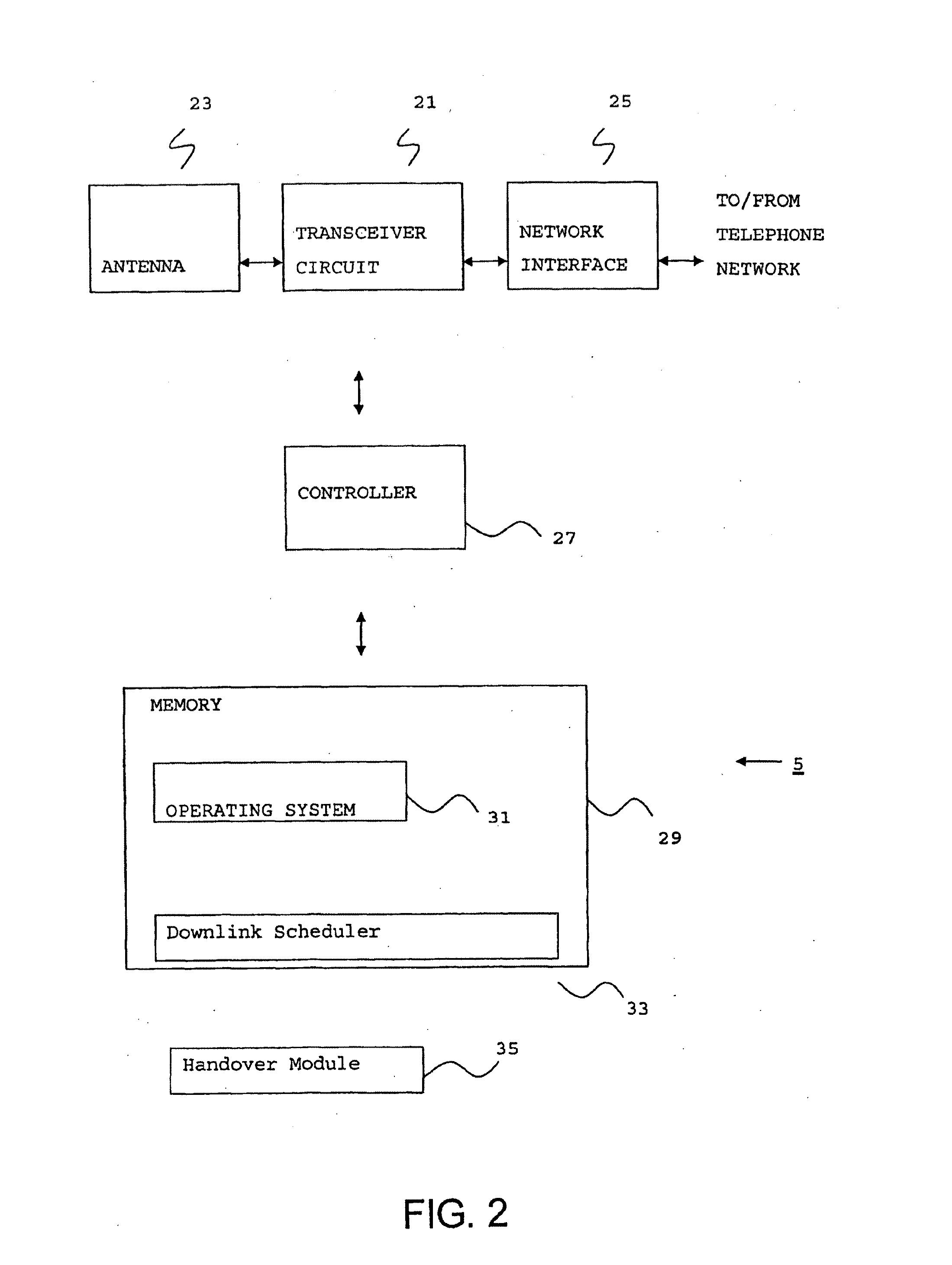Facilitating method for handover of a mobile communication device
a mobile communication and facilitation method technology, applied in the field of mobile telecommunications networks, can solve the problems of single data packet loss or delay in delivery, and achieve the effects of convenient modification, improved use of air interface, and convenient separate suspension of uplink
- Summary
- Abstract
- Description
- Claims
- Application Information
AI Technical Summary
Benefits of technology
Problems solved by technology
Method used
Image
Examples
Embodiment Construction
[0162]Referring to FIGS. 1-5, a first exemplary embodiment of this invention will now be described.
[0163]FIG. 1 schematically illustrates a mobile (cellular) telecommunication system 1 in which users of mobile telephones (MT) 3-0, 3-1, and 3-2 can communicate with other users (not shown) via a base station 5 and a telephone network 7. In this embodiment (that is, the first exemplary embodiment of this invention), the base station 5 uses an orthogonal frequency division multiple access (OFDMA) technique in which the data to be transmitted to the mobile telephones 3 is modulated onto a plurality of sub-carriers. Different sub-carriers are allocated to each mobile telephone 3 depending on the supported bandwidth of the mobile telephone 3 and the amount of data to be sent to the mobile telephone 3. In this embodiment, the base station 5 also allocates the sub-earners used to carry the data to the respective mobile telephones 3 in order to try to maintain a uniform distribution of the mo...
PUM
 Login to View More
Login to View More Abstract
Description
Claims
Application Information
 Login to View More
Login to View More - R&D
- Intellectual Property
- Life Sciences
- Materials
- Tech Scout
- Unparalleled Data Quality
- Higher Quality Content
- 60% Fewer Hallucinations
Browse by: Latest US Patents, China's latest patents, Technical Efficacy Thesaurus, Application Domain, Technology Topic, Popular Technical Reports.
© 2025 PatSnap. All rights reserved.Legal|Privacy policy|Modern Slavery Act Transparency Statement|Sitemap|About US| Contact US: help@patsnap.com



